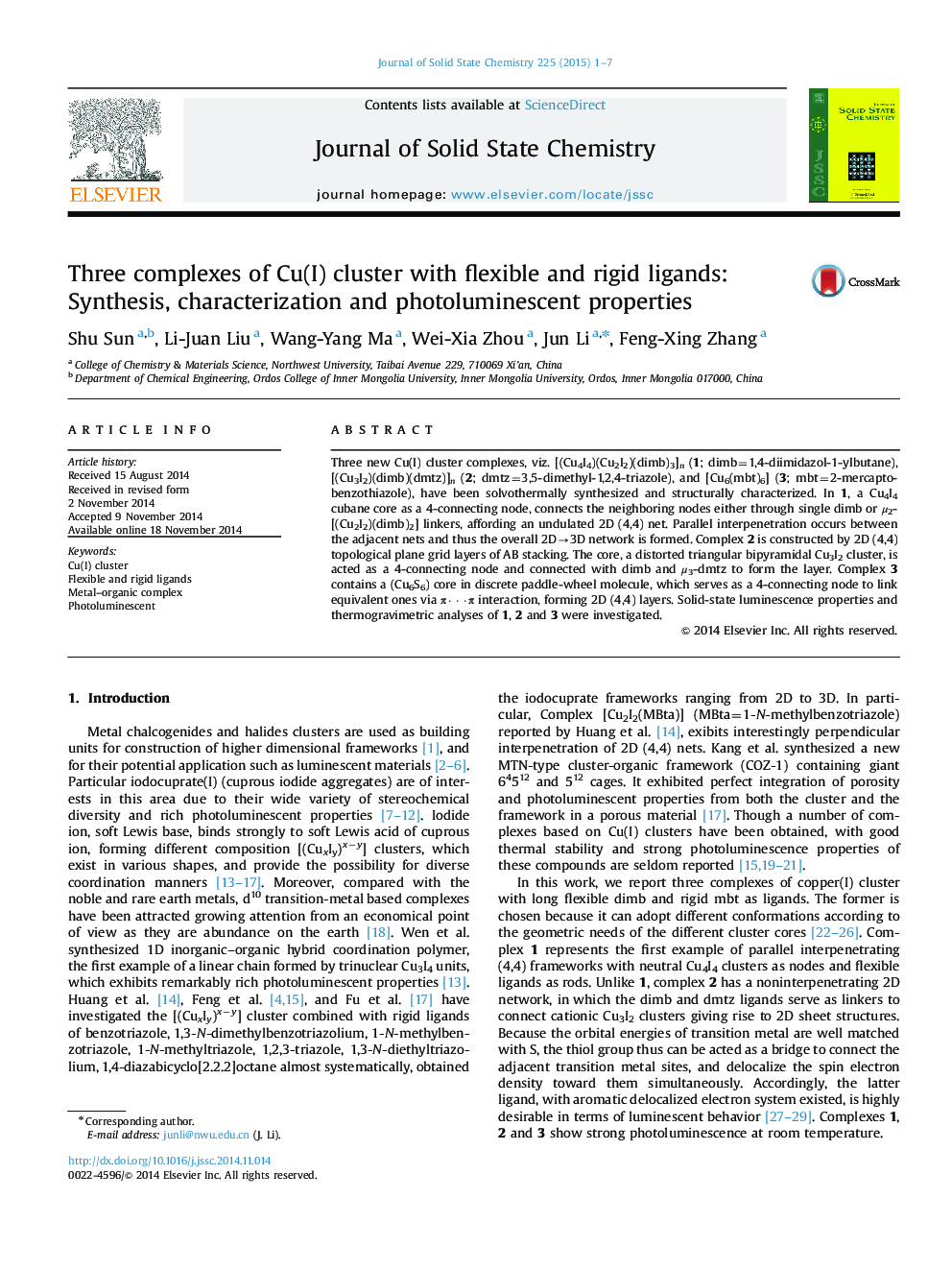| Article ID | Journal | Published Year | Pages | File Type |
|---|---|---|---|---|
| 1331591 | Journal of Solid State Chemistry | 2015 | 7 Pages |
•Complex 1 represents two-fold 2D→3D parallel interpenetrating framework.•Complex 2 shows triple emissions.•Complex 3 displays a quite intense near-infrared (NIR) emission.•These complexes have good thermal stability.
Three new Cu(I) cluster complexes, viz. [(Cu4I4)(Cu2I2)(dimb)3]n (1; dimb=1,4-diimidazol-1-ylbutane), [(Cu3I2)(dimb)(dmtz)]n (2; dmtz=3,5-dimethyl-1,2,4-triazole), and [Cu6(mbt)6] (3; mbt=2-mercaptobenzothiazole), have been solvothermally synthesized and structurally characterized. In 1, a Cu4I4 cubane core as a 4-connecting node, connects the neighboring nodes either through single dimb or μ2-[(Cu2I2)(dimb)2] linkers, affording an undulated 2D (4,4) net. Parallel interpenetration occurs between the adjacent nets and thus the overall 2D→3D network is formed. Complex 2 is constructed by 2D (4,4) topological plane grid layers of AB stacking. The core, a distorted triangular bipyramidal Cu3I2 cluster, is acted as a 4-connecting node and connected with dimb and μ3-dmtz to form the layer. Complex 3 contains a (Cu6S6) core in discrete paddle-wheel molecule, which serves as a 4-connecting node to link equivalent ones via π···π interaction, forming 2D (4,4) layers. Solid-state luminescence properties and thermogravimetric analyses of 1, 2 and 3 were investigated.
Graphical abstractComplexes based on Cu(I) clusters possess two-fold 2D→3D parallel interpenetrating (1), triple emissions (2) and near-infrared emission (3).Figure optionsDownload full-size imageDownload as PowerPoint slide
